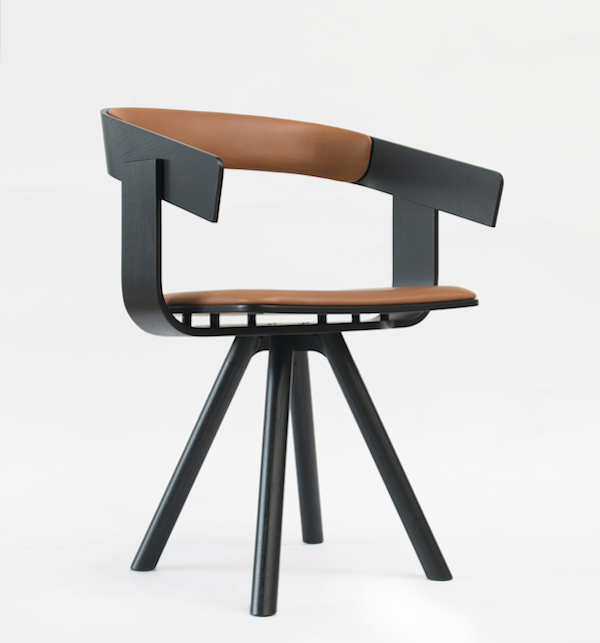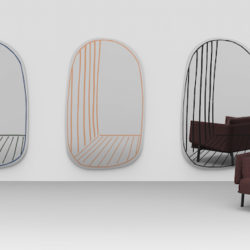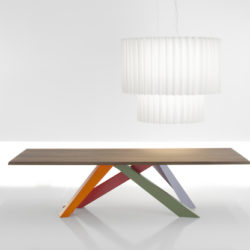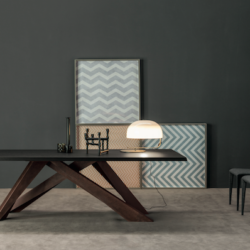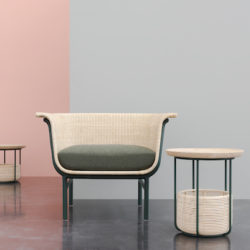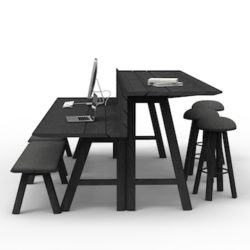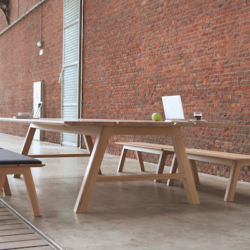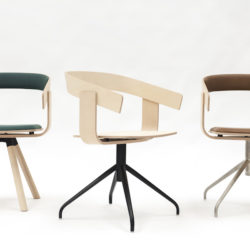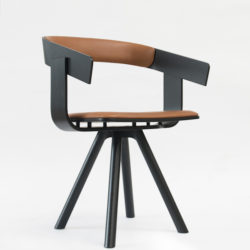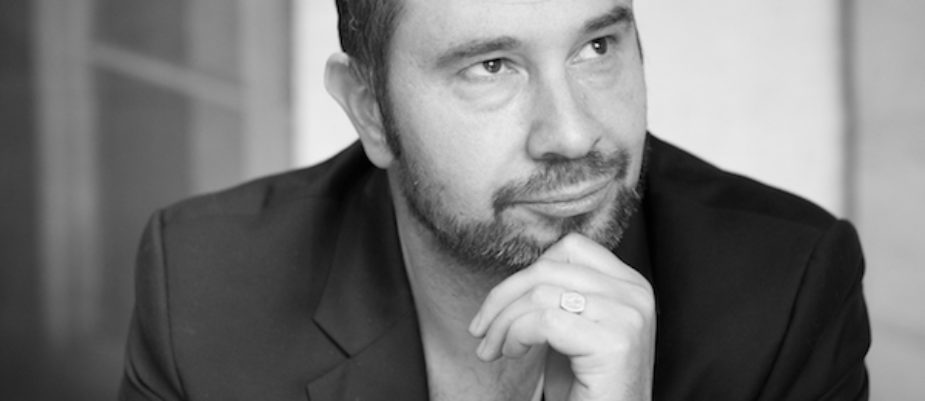
Although he studied political science and marketing, design was always something special for Alain Gilles. That’s why in 2007, he decided to quit his job in financing, change his life and open a design studio in Brussels. Since then he has been working for important companies and has received important international awards. We have met him at the BuzziSpace stand, at Orgatec 2016, where we have drink with him to BuzziFloat, his first project of a chair.
Is your design approach the same everywhere and with all kinds of companies or does the approach change to the different situations?
No, of course the approached will depend on the type of project and company it designed for. Then again, there are always common traits to what we do and how we approach a project: logics, visions, materials combinations, general shapes, etc… which only makes sense it is coming out of the same mind and Studio.
The biggest difference probably lies in the fact that a project is self-initiated and not designed at first for a specific company/editor but rather proposed to a company; or if it is done for a specific company and answers some of their general requests.
You operates on quite different markets and fields. Do your analyses show new users life styles and requirements?
Yes, indeed, we do design for some very different markets but always in the mid to high level part of the market since I am only interested in qualitative products. Having studied Political sciences and Marketing Management before industrial design I generally have a pretty good feel for the changes our societies are going through and general evolution in lifestyles. Having lived “different” lives also helps.
Of course before starting a project we always check quickly what is already existing in order to make sure we don’t repeat what has been done, and to get a feel of where what we will be designing will be positioned in the market.
For some projects like the solar lamp design we had to a careful and long study of how people live in off-the grid countries is it is more remote to my daily life. It was the same when we designed the first collection of a new French kitchen tools brand since we generally didn’t know much about that large and crowded marked and need to understand what was technically possible in order to define a DNA for the new brand.
Are there any conceptual “contaminations” and common elements among the many design areas you deals with?
Without repeating ourselves from one project we always try to make sure that there is a red thread between the different design that we do even if the sectors are different one from the other. In general, I work on what I have come to call “Simplexity” with projects that may appear simple at first hand but that generally have different levels of understanding, and also what I call “New simplicity” for projects that are clearly readable and use a minimum amount of material and transformation processes in their production. We will generally work on the architecture of the product and/or on the graphic aspect and material combinations of the product.
So, yes indeed, there are definitely some “contaminations” between our different projects. The fact that we design for different fields also generates this cross-pollination effect between projects.
How has the workspace vision changed in the past few years and have these changes an impact on the new interior design and furniture products?
Before studying industrial design I work for five years in a large American company active in international finances. As far as people management and organization they were definitely ahead of their times. During those fives year I had the chance to live firsthand the transformation of the company to a paperless company. They also re-did all their interiors in their 15 story-building and 1.500 strong staff and went for a hot-desking policy with fully opened space. As a future-designer those experience were very enlightening to me since I experience them first hand and felt what other were feeling.
In the last few years the workspace has become a lot more homey and a lot more human and I believe that through our collaboration with Buzzi Space we had the chance to have an influence on the evolving visions of the work environment and the increased attention to the wellbeing of the people. The office where we spend most of our days has become more and more a “full experience” place ( not to say a place of full of experience ) where people increasingly interact and share with other. In most cases the experience in the office is far richer and more modern than what most people live at home. One could almost say that some offices are a bit conceived like “boutique hotels” where one goes for a few days in order to live an experience different from their daily routines. People and the interaction between people have now become the fuel that drives successful companies and their interior design just tend to reflect that importance and the fact that people matter.
What scenarios and evolutions do you expect for the office and the ways of working in the near future?
I believe that we will work less and less in the office and only come a few times or a few days during the week to re-connect with colleagues to share information and enjoy the social sides of work. People will be working partly from home, or co-working spaces at walking distances from their homes. They will thus spend less time commuting and when they will be commuting they will be try to escape the rush hours.
When in the office, people will have the possibility to work from different types of spaces that best suits their need for concentration or collaboration. To work lying on a couch, sitting or stand behind a desk, or working in collaborations with other in informal spaces with enough sound proofing elements to respect the intimacy and concentration of other.
Green spaces and terrace-like spaces will become the norm to escape the dull grey routine of what used to be called the work day, but which is above all the most important time in the life of people.
Text by Gabriele Masi.
Captions
Didascalie:
In evidence, A portrait of Alain Gilles, copywrite Thomas De Boever.
2. New Perspective Mirror, Bonaldo, Alain Gilles.
3, 4. Big Table, Bonaldo, Alain Gilles.
5. Wicked Armchair & Basket Table, Vincent Sheppard, Alain Gilles, copywrite STOR.
6. BuzziPicnic table, versione split level, BuzziSpace, Alain Gilles.
7. BuzziPicnic Workbench, BuzziSpace, Alain Gilles.
8, 9. BuzziFLoat chair, BuzziSpace, Alain Gilles.
